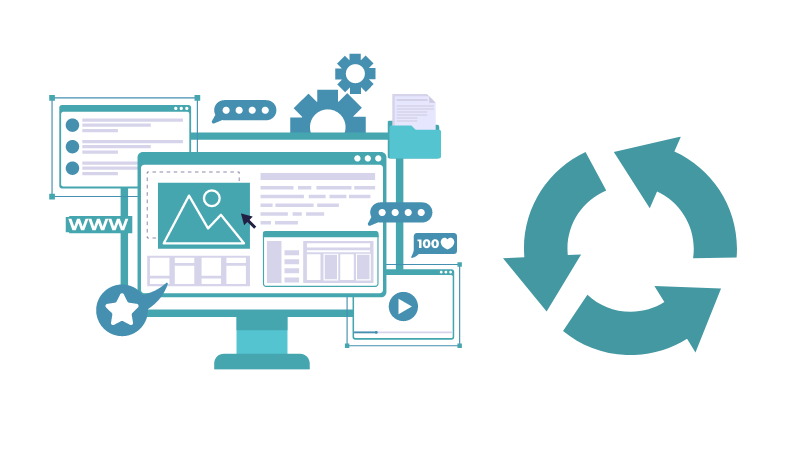Mastering the 7 Stages of the Software Development Life Cycle: Expert Guide

The Software Development Life Cycle (SDLC) is the foundation for bringing any software project from concept to reality. It’s a structured roadmap that guides developers through the various stages of creation, ensuring a high-quality, efficient, and successful outcome. Whether you’re a seasoned developer or just starting, mastering the SDLC’s seven stages is crucial for navigating the complexities of a software development company in Dubai.
This expert guide will delve into each stage, equipping you with the knowledge and best practices to excel in every phase. From laying the groundwork to ongoing maintenance, we’ll explore the key activities, potential pitfalls, and success factors that ensure your software thrives.
1. Stage 1: Planning
The first stage of the SDLC sets the foundation for the entire development process. During the planning phase, stakeholders define project goals, scope, and requirements. This involves gathering user feedback, conducting market research, and identifying key functionalities. Clear communication and collaboration among stakeholders are crucial to ensure alignment and mitigate misunderstandings. Additionally, establishing a realistic timeline and budget is essential for managing expectations and resource allocation throughout the project lifecycle.
2. Stage 2: Analysis
In the analysis stage, developers delve deeper into the project requirements, translating stakeholder needs into technical specifications. This involves defining system architecture, data models, and software design patterns. Through thorough analysis, developers identify potential risks, dependencies, and constraints that may impact project delivery. Stakeholder involvement remains critical during this stage to validate requirements and ensure alignment with business objectives. Moreover, leveraging tools such as use case diagrams, flowcharts, and mockups can aid in visualizing system requirements and fostering a shared understanding among team members.
3. Stage 3: Design
With requirements in hand, developers proceed to the design stage, where they create a blueprint for the software solution. This involves designing the user interface, database schema, and system components. The design phase emphasizes modularity, scalability, and maintainability, laying the groundwork for efficient development and future enhancements. Collaboration between designers, developers, and architects is paramount to ensure that the design aligns with technical specifications and user expectations. Additionally, adherence to design principles and coding standards facilitates code reuse and minimizes technical debt, enhancing the overall quality of the software. Also that The design phase of software development in AI lifecycle is where ideas and concepts take shape. It involves designing the system architecture, user interfaces, and algorithms that will power the AI software. In this phase, the requirements gathered during the planning phase are transformed into a tangible design.
4. Stage 4: Implementation
Armed with a comprehensive design, developers embark on the implementation phase, where they bring the software to life through coding. This stage involves writing, testing, and debugging code according to the established requirements and design specifications. Agile methodologies such as Scrum and Kanban promote iterative development, allowing teams to deliver incremental functionality and gather feedback early in the process. Continuous integration and automated testing tools streamline the development workflow, ensuring code quality and minimizing defects. Collaboration between developers through version control systems like Git enables seamless code integration and facilitates team coordination.
5. Stage 5: Testing
Testing is a critical stage of the SDLC where developers validate the functionality, performance, and security of the software solution. This involves a combination of manual and automated testing techniques to identify and rectify defects. Unit tests verify the behavior of individual components, while integration tests assess the interaction between modules. Additionally, functional tests ensure that the software meets the specified requirements, while performance and security testing uncover potential bottlenecks and vulnerabilities. Embracing test-driven development (TDD) practices encourages developers to write test cases before writing code, fostering a culture of quality and reliability.
6. Stage 6: Deployment
Once the software solution has passed rigorous testing, it is ready for deployment to production environments. The deployment stage involves packaging the application, configuring servers, and deploying releases according to established deployment pipelines. Continuous delivery practices enable automated deployment, allowing teams to release updates frequently and reliably. Deployment strategies such as blue-green deployment and canary releases minimize downtime and mitigate risks associated with software updates. Additionally, monitoring tools and analytics platforms provide insights into system performance and user behavior, enabling proactive maintenance and optimization.
7. Stage 7: Maintenance
The final stage of the SDLC is maintenance, where developers ensure the continued functionality and performance of the software solution post-deployment. This involves addressing user feedback, fixing bugs, and implementing new features or enhancements. Regular software updates and patches are released to address security vulnerabilities and improve user experience. Adopting agile methodologies such as DevOps promotes a culture of continuous improvement, enabling teams to respond rapidly to changing requirements and market dynamics. Moreover, leveraging feedback loops and metrics-driven insights facilitates data-driven decision-making and fosters a culture of learning and innovation.
Mastering the 7 Stages of the SDLC
Mastering the 7 stages of the Software Development Life Cycle requires a combination of technical expertise, project management skills, and collaboration among team members. By following best practices, leveraging tools and technologies, and continuously improving processes, software development teams can streamline their workflows, deliver high-quality software solutions, and achieve project success.
Conclusion:
Mastering the seven stages of the Software Development Life Cycle is essential for delivering successful software solutions that meet user needs, adhere to quality standards, and drive business value. By following a structured approach to software development and embracing best practices and methodologies, developers can navigate the complexities of the SDLC with confidence and achieve mastery in their craft. As technology continues to evolve and shape the future of software development, a solid understanding of the SDLC remains indispensable for building resilient, scalable, and innovative software solutions that stand the test of time. With a solid understanding of the SDLC and continuous improvement, you can deliver exceptional software experiences that meet your users’ needs.
To read more about SEO Migration Services: Maintain Listings & Boost Efficiency











